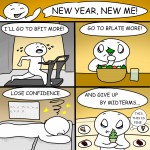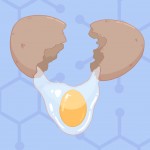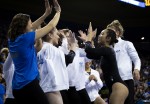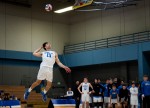USAC recap – Jan. 8
The Undergraduate Students Association Council is the official student government representing the undergraduate student body at UCLA. Council meetings take place every Tuesday at 7 p.m. in Kerckhoff 417 and are open to all students. Watch a livestream of the meetings on the USAC Live! channel on YouTube.
Special Presentations:
- Representatives from the Good Clothes Good People redistribution center said more than 350 visitors stopped by the center in its first four weeks of operation. They said they are seeking more funding because the center currently operates fully on student volunteer labor.
Agenda:
- The council allocated a total of $18,793 from the Contingency Programming Fund for service to USAC and non-USAC groups.
- The council allocated a total of $1,000 from the Supplemental Fund for Service to non-USAC groups.
Reports:
- President Claire Fieldman said the University of California Regents is considering terminating a student advisor position. She also addressed the email she sent to the student body about recent student deaths, apologizing for mentioning two members from Greek life but not other areas of campus. She said she did not mean to be selective and will conduct further due diligence in the future.
- Internal Vice President Robert Blake Watson said his office will host its off-campus living fair Jan. 22. He added student organizations will hold a campus sustainability week during week two.
- External Vice President Jamie Kennerk said she is resigning from a committee within USAC because she is becoming the vice chair of a UC Student Association committee. She added she will attend the Regents meeting next week. She also added the Students of Color Conference may be delayed until April due to reorganization within UCSA.
- A general representative 1 office representative said the office will hold a student organization speed dating event Tuesday in the Bruin Viewpoint Room. He added the office will hold a student identity panel for students of mixed identities Sunday in the Bruin Viewpoint Room.
- General Representative 2 Bella Martin said her office is taking suggestions for points to raise to all Greek life leaders at an upcoming retreat.
- Transfer Student Representative Jessica Kim said her office held its Transfer Student Involvement Fair on Tuesday. She added her office is considering adapting its internship to teach lobbying and policy skills, rather than exclusively serving as a pathway into USAC.
- Campus Events Commissioner Alley Madison said her office is screening “Wayne,” a YouTube series on Monday at 11 a.m. She added her office will also screen “Arctic” on Jan. 27.
- Community Service Commissioner Bethanie Atinuke Sonola said her office will hold its nonprofit networking night Jan. 22. She added students went on alternate breaks to locations including Seattle and Fresno with CSC over winter break.
- Facilities Commissioner Julia Ho-Gonzalez said her office’s The Green Initiative Fund funding applications are due Friday at 5 p.m.
- Financial Supports Commissioner Jay Manzano said his office selected its textbook scholarship recipients. He added his office increased its iClicker library by 63 iClickers last quarter.
- Student Wellness Commissioner George Louis Faour said his office is set to host several events for the National Drug and Alcohol Facts Week during week three. He added his office is seeking models for a body positivity event. He also added his office is holding a sexual health healing space later this month. He also said his office will hold an event to CPR and first-aid certify 100 fraternity members later this month.
Cooking with Chemistry: Boiling down the science behind the egg and its role in your kitchen
Chemistry as a science sounds like something that should strictly be confined to a laboratory with poisonous toxins and exploding reactions, but, as it turns out, most labs aren’t quite like that. In fact, the most important laboratory is found in every home: the kitchen. Understanding the complex processes that go on in the kitchen allows us to go further than the recipe to improve our cooking.
Eggs, one of the most ubiquitous ingredients in cooking, possess such a rich chemistry that they are absolute essentials to any serious chef. An egg’s purpose is mechanical – it mixes ingredients together. Used as emulsifiers and foaming agents, eggs owe their versatility to the fats and proteins that constitute them.
To understand the chemistry of eggs in cooking, we first need to think like molecular-sized architects. Our building materials are primarily carbon, nitrogen and oxygen, and our glue the intermolecular interactions between these atoms.
Intermolecular interactions: It’s all just electric forces
If we want to understand what eggs are doing in our kitchen, we ought to first understand how molecules – a group of atoms connected to each other – interact.
The nature of molecular interactions is electrical in nature. Atoms have a nucleus made of protons and fast-moving electrons that surround the proton. Protons are positively charged and electrons are negatively charged, and we know that opposite charges attract and that like charges repel. This is the key to understanding so much of what happens in the kitchen.
In a molecule, electrons are not confined to their own atoms. They can move around with ease if the right atoms are connected in the right way. Sometimes the movements are so divisive as to polarize the molecule, and sometimes not quite so much that the molecule is not very polar at all. The important thing to keep in mind is that molecules will interact with each other depending on these degree of electrical interactions.
Unscrambling the egg
Eggs are composed of water, fat and, most importantly, proteins. Proteins are interesting chains of amino acids found in nature, and a lot of their behavior is dependent on these electrical interactions.
Using a particular set of atoms as building materials – which are carbon, nitrogen, oxygen and maybe a dash of sulfur – we can construct an amino acid. Start putting them together, and our chains will start to spiral and flatten due to electrical interactions between electrons that move around a molecule and expose positive regions.
Chain enough amino acids and form enough spirals, and the result is an immensely complicated and massive molecule known as a protein. The sheer size of this molecule allows for numerous electric interactions of electrons being attracted toward positive regions or electrons being repelled away from other electrons.
While impressive in its complexity, these massive molecular structures fail miserably under stress testing. Changes in temperature and even physical agitation causes the very particular structure of these proteins to change dramatically, oftentimes irreversibly. While it may sound undesirable, this is exactly what we are doing as chefs. Cooking is, after all, the chemistry of large biological macromolecules.
Brownies, a thermally treated goop of chocolate and sugar
A box of brownie mix consists of sugar, wheat flour, cocoa powder, palm oil, corn syrup, corn starch, a bit of salt, canola oil and some other things. There’s a slight problem: Most of these ingredients can dissolve in water – such as the salts and sugars – but some, like the oils, refuse to interact with the water.
Mixing tends to only work if the electrical interactions are compatible. Oil is large and electrically neutral, and water is small and highly charged. The two are so different that they would prefer to stick to their own kind in a solution.
In the kitchen, this is terrible news. Our brownie solution is soon to be a disaster. Our sugar is in the water and our palm oil in the vegetable oil we added, yet these two liquids won’t mix. We need an ingredient that will bind the two together – something that can mix with both water and oil.
Eggs serve just this purpose because of their key ingredient: proteins. Proteins are amphiphilic, meaning that they have segments that prefer mixing with oil and segments that prefer mixing with water. When mixing an egg, the proteins start to unravel, scooping the ingredients in the water and the ingredients in the oil, creating one large brownie goop. This property makes eggs an emulsifier, also known as a binding agent.
The most important meal of the day
Cooking an egg is a marvelous example of the denaturing process of a protein. Whether the egg is hard-boiled, sunny side up, poached or deviled, we observe the same process of a clear, viscous liquid turned into a delicious white and gelatinous meal.
Egg whites are 90 percent water and 10 percent protein. The major protein is ovalbumin, a particularly sensitive structure. Give it a temperature boost and it starts to fall apart on the molecular level, refolding in an irreversible manner. The protein starts to link up different strands together that it usually wouldn’t at room temperature, creating a cage for the water that was present. The trapped water gives egg whites its gelatinous behavior, but also its white color as the new structure begins to scatter light instead of letting it through. Too much heat and the cage becomes too tight, drying up the gel and creating a rubbery texture.
In order to cook quality soft-boiled eggs, a chef will need to respect the different proteins in the egg whites and the yolk. In boiling eggs, the two most important things are time and temperature. The whites start to cook first as they are the first set of molecules exposed to the heat of the water. The greater the temperature difference, the faster the outsides will start cooking, so for soft-boiled eggs, start with cold eggs in hot water. A strategy to prevent overcooking is to bring your water to a boil, turn off the flame and submerge your eggs, letting the thermal energy take care of the work.
Egg whites are quite versatile due to their tendency to trap things other than just water. When chefs beat egg whites, they physically agitate ovalbumin and open it up. The bundle of proteins begin to grab gas molecules in the air and bubble up, hence why eggs make for fantastic foaming agents in baking.
Understanding the chemistry of the kitchen is fun, but, more importantly, it’s practical. A proper chef understands that the power of an egg lies in its ability to bind all other ingredients together to create a delicious meal.
Second Take: Minority victories at Golden Globes reflect push for greater representation in media
Sandra Oh bowed and thanked her parents in Korean after winning a historic Golden Globe award.
Not only did Oh host the 76th Golden Globe Awards, she also went home with her own shiny trophy for best lead actress in a drama television series for her role in the thriller “Killing Eve.” Oh is the first woman of Asian descent to host a major awards show, and at the end of the 76th annual show, she became the first performer of Asian descent to win multiple Golden Globes. In addition to her role as Eve Polastri in “Killing Eve,” she won the Golden Globe for best supporting actress in 2006 for her role in “Grey’s Anatomy” as Dr. Cristina Yang. This win, along with many other wins and nominations, show the vast increase in representation of minorities in this year’s Golden Globes.
She hosted alongside actor Andy Samberg, and the pair avoided political commentary in comparison to the focus on the #MeToo movement at last year’s Golden Globes. This set the tone for a more mild, warmhearted evening that allowed the nominees and winners to shine on their own. Though less overtly political than previous years, Oh did offer a brief yet emotional testimony as to how it feels to be the first woman of Asian descent to host a American awards show.
“I said ‘yes’ to the fear of being on this stage tonight because, because I wanted to be here to look out into this audience and witness this moment of change,” Oh said.
Oh’s message on the importance of representation in Hollywood echoed throughout the night in beautiful ways. Her win for best lead actress in a television drama marks her struggle through decades of landing only supporting roles, an issue experienced by many Asian and Asian-American actors and actresses. Her role contributes to the rising amount of Asians appearing in lead roles in film and television. According to UCLA’s Hollywood Diversity Report, minorities in lead roles rose from 5.1% in 2012 to 18.7% in 2016, much closer to the 38.7% minority proportion in the US population. Asian-American actors in particular were only represented in 3.1% of film roles and 5% of broadcast scripted shows in 2016.
Films such as “Crazy Rich Asians” also helped contribute to a more proportional representation of minorities, and its nomination was culturally important because it recognized Asian actors’ ability to play complex characters, rather than stereotypical Asian subcharacters that are far too often used as weak comedic outlets. The romantic comedy lost to “Green Book” for Best Motion Picture – Musical or Comedy, and lead actress Constance Wu lost to Olivia Colman of “The Favourite.” But “Crazy Rich Asians” does not need an award to receive wide cultural acclaim. The film’s widespread success marks what may become a major shift toward proportionately accurate representation of Asians across all media platforms.
The successes of “Killing Eve” and “Crazy Rich Asians” exhibit the increase in Asian representation, in addition to more widespread representation in other domains: Miss Philippines was crowned Miss Universe, Awkwafina became the second Asian female to host “Saturday Night Live” and Korean boy band BTS gained extraordinary popularity in the U.S.
Many other moments at the Golden Globes gave unprecedented power to the movement for representation in Hollywood. Darren Criss won Best Performance by an Actor in a Limited Series or a Motion Picture Made for Television for his role as serial killer Andrew Cunanan in “The Assassination of Gianni Versace: American Crime Story,” making him the first Filipino-American to win a Golden Globe. He dedicated his award to his Filipino mother, showing how culturally significant these honors feel to underrepresented people.
“Roma” won Best Motion Picture – Foreign Language, and its director, Alfonso Cuarón, won best director of a motion picture. The Netflix drama’s triumph shows how the award ceremony exhibited racial representation in media. Cuarón humbly gave credit to the acting of Marina de Tavira and Yalitza Aparicio. Aparicio starred in the film having no experience acting at all, an interesting move by Cuarón to give the film a realistic feel. His innovation allowed him to win a remarkably competitive category, competing against the directors of “A Star is Born,” “Green Book,” “Vice” and “BlacKkKlansmen.” This win continues the momentum for Mexican directors as Guillermo del Toro, Alejandro González Iñárritu and Alfonso Cuarón have won a combined four Golden Globes for best director and four Academy Awards for best director since 2013. Cuarón rounded out his acceptance speech when he said, “Gracias famila y gracias Mexico.”
This forward movement toward proportional representation must continue into the future if we hope to avoid monotonous, monocultural films. The many diverse projects in this year’s Golden Globes have certainly shown that the industry is more successful when people of all backgrounds work together.
Potential treatments for brain diseases may arise from studying neurons in space
This post was updated Jan. 11 at 4:21 p.m.
UCLA researchers launched brain cells into space last month in an attempt to understand a neurological condition that commonly affects astronauts.
The samples will spend five weeks in the International Space Station, where they will be maintained by automated hardware.
Once the samples return to Earth, UCLA researchers will analyze the brain cells to try and develop an understanding of intracranial hypertension, a condition that often causes astronauts to experience headaches and vision changes after returning to Earth.
Many researchers believe the condition is caused by a change in pressure in the fluid surrounding the brain. However, Araceli Espinosa-Jeffrey, a research neurobiologist at the Semel Institute for Neuroscience and Human Behavior at UCLA, said she thinks the condition might instead be caused by an increase in brain cells resulting from exposure to microgravity, the gravity experienced while orbiting around the Earth.
She started developing this theory after observing that stimulated protein-producing neurons exposed to a microgravity environment increased their production of neurons and myelin, a protein that covers parts of the neuron and speeds up neural impulses. She theorizes that this increase in production may be due to a cell growth molecule that has not been discovered yet.
“We hope that the findings lead to discovering new molecules that influence cell and protein production that may be masked by gravity changes,” she said.
The results of this project could also be further applied to developing treatments for neurodegenerative diseases.
“Newborns, adults and those that are aging can all be affected by a lack of myelin, which can manifest in different forms,” she said.
The extra myelin produced by neurons in space could be implanted in patients with neurodegenerative diseases, offering a potential new treatment method. However, other professors said they think the research is still in its early stages and requires further study.
Gal Bitan, a neurology professor at the Brain Research Institute at UCLA who is not involved on the project, said while he is interested in the possible outcomes of the study, he thinks it may be difficult to implant the cells that produce myelin.
“We don’t have a good handle specifically on how to treat them yet, as the brain controls most of the functions in the body, and is especially hard to reach,” he said. “If it can be done without difficulty and it is safely done, it can restore myelin sooner than later.”
He also added that finding a treatment for neurodegenerative diseases could improve quality of life dramatically for patients because of the brain’s high involvement in all of the body’s processes.
“It has a major impact on livelihood as well, for example if a person loses a leg or both of them, they can relatively continue well enough, but (it’s) not the same with (losing) a brain,” he said.
Daniel Lu, an associate professor of neurosurgery at UCLA who is not working on this project, agreed with Bitan, and said while Espinosa-Jeffrey’s hypothesis could lead to new treatments, it isn’t ready for implementation.
“(Her) hypothesis of implanting (brain cells) to restore function can possibly lead to some developments, but it requires further study,” he said.
Around the League: Pac-12 and MPSF sports remain competitive as winter season heats up
Gymnastics
Angie Forburger, assistant Sports editor
The gymnastics season is underway.
Eight Pac-12 gymnastics programs kicked off their 2019 seasons this past weekend or will begin their season this week.
No. 1 UCLA (1-0) began its run to defend its 2018 NCAA title Friday with a home win against No. 11 Nebraska. The Bruins will next head to Anaheim to compete in the Collegiate Challenge against No. 8 California (0-1), Michigan State and UC Davis.
No. 5 Utah (1-0) won its season-opening meet against Penn State by nearly three points. The Utes will next travel to No. 24 BYU to battle to Cougars before facing their first Pac-12 opponent – No. 17 Oregon State – on Jan. 19.
The Golden Bears fell to No. 4 LSU Tigers on Friday and will head to the Collegiate Challenge alongside UCLA this weekend.
Oregon State has yet to begin its season as it travels to face No. 22 Illinois, No. 10 Kentucky and Lindenwood this weekend.
Washington will also start its season this weekend as it travels to face Nebraska. The Huskies’ first Pac-12 matchup is Jan. 18, when they will head to Arizona.
The Wildcats took home second place in a meet last weekend against Central Michigan, Illinois and Bridgeport. Arizona will host No. 12 Arkansas this weekend before taking on its first conference opponent in Washington the following weekend.
No. 21 Stanford finished in first place at the NorCal Classic last weekend to start the 2019 season. It will next face Sacramento State and Seattle Pacific this weekend before traveling to Berkeley on Jan. 21.
No. 20 Arizona State hosted No. 23 Minnesota, No. 19 Missouri and Illinois-Chicago and finished in second place. The Sun Devils will next travel to Texas Woman’s University on Saturday.
The season will continue through March with the Pac-12 Championships slated for Mar. 23.
Men’s basketball
Sam Connon, assistant Sports editor
The Pac-12 is wide open.
Fresh off of the worst month by a Power Five conference in over a decade, the Pac-12 got conference play rolling last weekend. Not a single team is ranked in the AP Top 25, and only Arizona State (10-4, 1-1 Pac-12) received a vote.
UCLA (9-6, 2-0), USC (9-6, 2-0) and Arizona (11-4, 2-0) are tied atop the standings. Utah (7-7, 1-1) upset Arizona State 96-86 on Thursday, but blew a late lead in regulation to Arizona and lost 84-81 in overtime.
UCLA holds a share of first place after wins over Stanford and Cal to open the conference schedule, despite losing four straight to end nonconference play. USC suffered a four-game nonconference losing streak of its own, but they closed out December with back-to-back wins.
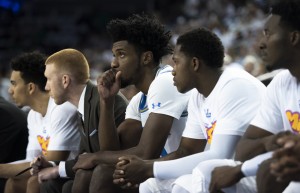
Colorado (9-5, 0-2) entered last weekend tied for the Pac-12 lead with nine out-of-conference wins, but the side lost to both Arizona and Arizona State.
Washington (10-4, 1-0) and Washington State (7-7, 0-1) faced off for their in-state rivalry game, and the Cougars came out on top 85-67. Oregon State (9-4, 1-0) won the Civil War game over Oregon (9-5, 0-1) 77-72.
Washington State forward Robert Franks leads the Pac-12 in scoring with 22.1 points per game, while UCLA sophomore guard Jaylen Hands leads the conference in assists per game with 6.9. USC center Nick Rakocevic has the most rebounds per game with 10.1.
Women’s basketball
Joy Hong, assistant Sports editor
With five teams ranked and 10 teams above .500 in overall record, every game in the Pac-12 can be a toss up this year.
UCLA women’s basketball (9-6, 2-1 Pac-12) upset then-No. 18 California 84-79 in overtime and fell to No. 6 Stanford (12-1, 2-0) by just six points last weekend.
Both the Cardinal and the Bears defeated the Trojans (10-4, 0-3), leaving USC to join Colorado and Washington with no conference wins so far.
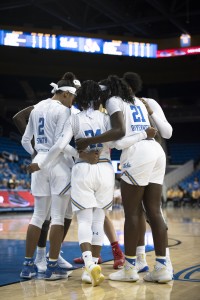
Unranked Arizona (12-2, 2-1) upset then-No. 19 Arizona State (11-3, 2-1) 51-39 after failing to beat its in-state rivals in all three meetings last season.
No. 5 Oregon (13-1, 2-0) has a win over then-No. 4 Mississippi State – which reached the national championship game last year. But the Ducks struggled against the Huskies before pulling away in the final quarter to win 84-71.
Besides already being a competitive conference, the Pac-12 could also be shaken up after notable injuries from last weekend.
Guard Kat Tudor from No. 10 Oregon State (12-2, 2-0), guard Daneesha Provo from Utah (13-1, 2-1) and forward Nadia Fingall from Stanford all suffered ACL injuries during the first weekend of Pac-12 play and will miss the remainder of the season.
Men’s volleyball
Gabriel McCarthy, assistant Sports editor
The Bruins began play as volleyball matches kicked off across the Mountain Pacific Sports Federation.
No. 2 UCLA men’s volleyball began the season last week with two wins over Princeton (0-4) and UC San Diego (0-2), winning 3-0 and 3-1, respectively. Transfer redshirt junior opposite Brandon Rattray and senior outside hitter Dylan Missry led the team with 29 and 23 kills, respectively. The Bruins will next travel to No. 12 CSUN (2-1).
Concordia (0-3) began the season losing all three matches played in the UCSB Asics Invitational, against CSUN, No. 1 Long Beach State (3-0) and No. 10 UC Santa Barbara (3-0). The Eagles were nearly swept in all three contests apart from taking one set against CSUN in their first match.
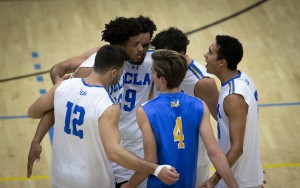
No. 11 Stanford (2-0) took two wins against Menlo and UC Santa Cruz, sweeping both teams. The Cardinal are led by sophomore opposite Jaylen Jasper, who has posted 19 kills at 3.17 kills per set.
No. 15 Grand Canyon (1-2) was also swept by Long Beach State and UC Santa Barbara in its first matches of the season but recorded a 3-2 win over CSUN in their third match of the season. It will next host Benedictine and Ottawa in Phoenix.
No. 5 Pepperdine (2-0) won both of its first matches of the season, including a 3-1 win over Princeton and a sweep of UCSD. It will play UCSB in two matches in three days before traveling to face No. 8 Loyola-Chicago.
No. 5 BYU (0-0) has yet to begin its season and will host No. 7 Ohio State and No. 14 Ball State this weekend.
Men’s volleyball prepare for CSUN match by reflecting on lessons from season so far
The Bruins will face their highest ranked opponent so far this season.
No. 2 UCLA men’s volleyball (2-0) will match up against No. 12 CSUN (2-1) in the Matadome on Wednesday. This will be the first ranked opponent the Bruins will face this season.
UCLA started its season with two wins last week against Princeton (0-4) and UC San Diego (0-2), winning 3-0 and 3-1, respectively. Senior outside hitter Dylan Missry said those wins provided learning opportunities for the team.
“Those games just exploited our weaknesses and showed what we needed to work on,” Missry said. “We worked on some block defense stuff today that we need to get better at.”
Coach John Speraw said serving is an area that could use improvement.
“In the Princeton match we had four guys hit it over 70 mph,” Speraw said. “But then in the San Diego match we had 30 errors.”
UCLA had 30 service errors against UCSD, compared to 17 against Princeton.
Last year against CSUN, UCLA had 19 service errors in its match. The Bruins beat the Matadors in four sets, but senior setter Micah Ma’a said CSUN’s team is different this year with the graduation of opposite Arvis Greene.
“They will probably work a little more through their outsides than they have in the past,” Ma’a said. “(Greene) carried a huge load for them last year. He’s a ridiculous athlete.”
Greene led CSUN with 378 kills last year – 108 kills more than the Matador’s next best hitter.
Speraw said he is more focused on learning about his own roster.
“This time of the year is about trying to learn as much as you can about your opponents, but really trying just to be a little better on your side,” Speraw said. “Right now we’re two matches in with a bunch of new guys trying to figure out some systems.”
This new group of Bruins has not had as much in-game experience with each other this year compared to the Matadors. CSUN has already played a total of 14 sets while UCLA has only played seven. But, Missry said he isn’t concerned about the team’s chemistry.
“We had the whole fall block practicing together,” Missry said. “That new mixture of guys have definitely come together.”
Speraw added that fall practices have helped the Bruins prepare for a ranked opponent early on in the season.
“You get to this time of the year and some of those fundamental things you’ve been talking about all fall, it’s like, ‘Now I really understand its importance,’” Speraw said. “‘Now I have to be super focused on that because it’s actually costed me a match or a point or an opportunity.’”
